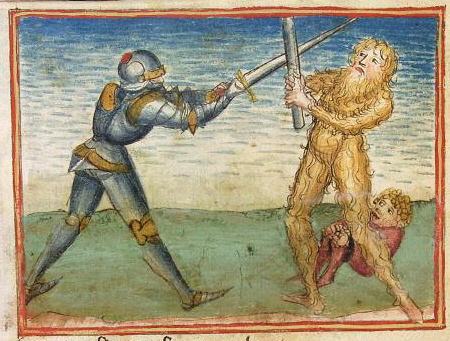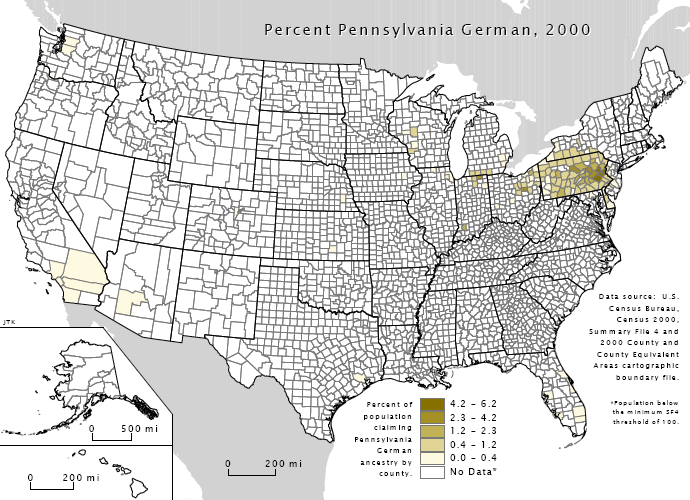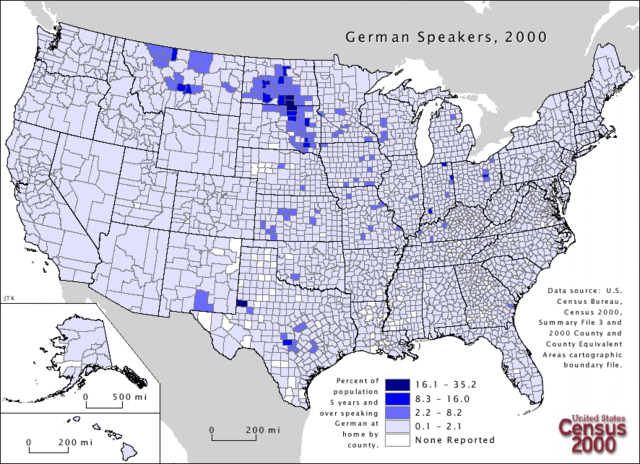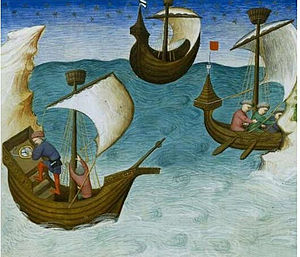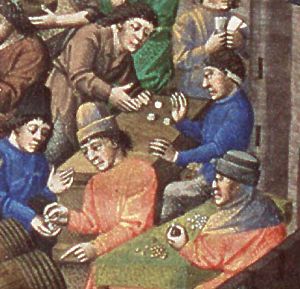Foreign and military relations of the Republic of California
Part 5 (of 6): The West
The Pacific Ocean is California's longest frontier, its busiest highway, its bloodiest battlefield, and its holiest religious shrine. So it is not surprising that the fleet responsible for defending the Pacific, the Great Western Shore[*3], is a very important body indeed. In power and prestige, it easily eclipses any of the land-based military commands.
Religious significance of the Pacific Ocean
To understand the Shore's importance, we must first understand the importance of the Ocean on which it sails in the minds and souls of Californians.
The sea, in a general sense, has always been of prime importance in Scientology. Its illustrious founder, as every Californian knows, went to sea by necessity rather than choice, forced to flee from enemies trying to persecute him. But out there on the waves, far from earthly distractions, he and his closest circle of supporters found that the sea offered them freedom, tranquility, and spiritual discipline not to be found on land. Going to sea became one of the prerequisites for joining the uppermost levels of the faith, and so it is today. But even the most ordinary cruise by the humblest peasant in a fishing or ferryboat is a pilgrimage of sorts, for to a Californian any given patch of ocean is ipso facto more hallowed than the most holy shrine on land.
The very disposition of the ocean, cut off from most Californians by chains of mountains, gives it added mystique. Very few people live along the waterfront, so most have to make their way over passes and through gaps, nearly all of which offer a moment when the ocean suddenly appears over a rise or around a bend in the highway. Many roadside shrines are found at these points, encouraging travelers to stop, reflect, and meditate.
So much for oceans in general. But the Pacific Ocean specifically was given a prominent place in the cosmology of Scientology from its beginning. According to the earliest canonical scriptures, it is here, just off California's coast, where human souls (except those of scientologists) return to earth seeking bodies, after the harrowing journey through the heavens that follows physical death. The scriptures say that the souls fly over water until they reach land, and then seek out an unborn human body to enter and inhabit. Though not specifically in the scriptures, it is universally believed that the first kick that an expecting mother feels is the jolt of a soul entering the child's body. The Pacific, therefore, is the point where every human life cycle begins.
Given that California is the first landfall that all human souls make after splashing down, Californians assume that they get first pick, as it were, and that the best and swiftest and cleverest human essences implant themselves within Californian mothers, leaving the rest to wander further inland. Following this line of reasoning, it is considered best for women soon after conception to make their way to some outcropping or headland jutting out into the water, so as to be one of the very first people encountered by the multitude of souls on their landward journey. The busiest holy site in all of California is at Point Raise (Reyes), a long outcropping just north of San Francisco where future mothers from all over the Republic gather to cast out their metaphysical nets and snare the best possible offspring. Attending clergy, all of them members of the navy, are on hand to teach the women rituals designed to increase their chances still further - for a fee, of course. The journey to Point Raise is normally undertaken with a group of female relatives; when this is not possible, a woman may travel with her husband. It can be a frustrating trip, for if the baby should kick before the mother reaches the coast, the entire pilgrimage is pointless and the unhappy party simply returns home.

Yet another teaching illustrates even more intensely the centrality of the Pacific in the early scriptures of Scientology. All Californians know the story of the evil heavenly being called Zenu, how he murdered billions of people in the depths of time, and how the spirits of his victims continue to wander the earth today, attaching themselves to parts of human bodies and inflicting humanity with all kinds of mental and emotional pain.[*4] Hawaii, far out in the Pacific, was the location of these mass murders. One of the Church's most potent rituals is the purging en masse of these clinging spirits, and it can only be performed aboard ship on the high seas: drawing nearer to the place of the catastrophe is considered the only way to frighten them away from one's body. This purifying rite is therefore only available to members of the navy.

Naturally, Pacific islands are places of immense sanctity in the Californian religion. The Free Zone is blessed with a chain of holy islands on which Presidents past have built temples, monasteries, and other great installations. The Republic has mostly open waters off its coast. The only offshore island of any consequence is Farallon, 20 miles from San Francisco. It is home to a monastic order open only to retired sailors of the Shore. Only members of the order are allowed to set foot on it. Much further away are the mystical islands of Hawaii itself. Californians have carefully maintained the means to reach these islands, but pilgrimages are exceedingly rare. When they occur, they allow the Republic's highest clerics to engage in their most carefully guarded rituals of all. More on this later.
It is necessary to keep all of the above in mind in order to remember that California's Great Shore is no mere navy, and its area of operation is no mere coastline. Both the fleet and the waters it sails are part of the bedrock of the Republic's religion and society.
Economic importance of the Pacific Ocean
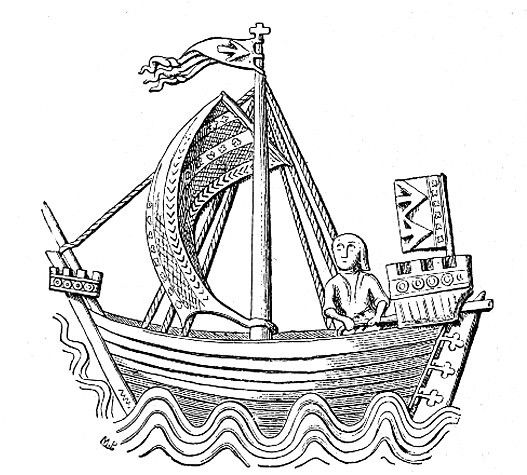
On a more practical level, the Pacific Ocean carries an overwhelming portion of the Republic's trade with the outside world. About half of its exchange toward the south, and nearly all of it with the north, is conducted by ship. California offers the other nations of the Pacific coast the abundance of its agricultural surplus, its luxury crafts of unrivalled quality, and the naval stores produced from its forests of ponderosa pine. One of its key needs is fish. The rich fisheries to the north as far as alaska are monopolized by the maritime republics of the Salish Sea. While California's fishing fleet is large enough, it must rely on the Salishers to meet all the protein demands of its large population. These great northern hunters can also hunt whales and other mammals with greater skill than the Californians, and they bring the many products of their watery game into San Francisco, as well. The ocean is also California's only way to acquire luxuries from the tropics - coca, coffee, rubber, and so forth.
The entire merchant marine is closely regulated by the navy. Ship owners must pay a fee to the navy to administer religious training and rites of purification to every ordinary seaman. The Republic has the right to press any ship and its crew into naval service when the need arises.
The Navy
Now let us look at the Great Shore itself. The navy of California, as already strongly hinted, is a religious order as well as an armed force. The complex initiation process, the harsh discipline, the shared rituals; in short, the whole structure of naval life creates a strong sense of belonging and a fierce loyalty in all of its members. This powerful group identity has allowed the Great Shore to reamin a coherent body and a cultural force through the Republic's entire history. It has come through coups, schisms, civil wars, enemy occupations, famines, and earthquakes and survived more or less intact. So persistent is the Great Shore that some palace philosophers have gone so far as to write that the navy
is California. This is clearly nonsense, because as strong as those social ties holding the Fleet together may be, the Shore ultimately would be useless without the produce and labor of millions of the peasants, and the peasants can only be maintained in their millions through the system of engineers and bureaucrats that organize them and irrigate their land. Nevertheless, the Great Shore is as strong as any institution in the Republic.
Most of the manpower in this vast organization comes from Lifers, that class of lifelong conscripts that all the Western empires rely on for their military strength. In fact, the term is more apt here than elsewhere, for a Californian naval recruit signs a very traditional contract pledging himself, body and soul, to the Shore for a term of one billion years or the life of the planet, whichever should be shorter. The navy rarely has to rely on coersion to get its recruits. While life at sea is dangerous and discipline is ruthless, becoming a sailor represents a considerable rise in social status for a Californian peasant. A lifer at sea gets decent pay, the respect of the nation, and significant benefits for his immortal soul. When recruiting officers enter a village, far from having to impress young men into service, as the land-based commanders do, they often find themselves able to choose only the strongest and most able from among the volunteers, sending the rest home.
Lifers who survive the hardships of training, cruising, and combat may rise through the ranks to become mates in charge of teams of their juniors. A few are even selected for the more formal academic training required of an officer. Most of the top navy brass, however, comes from a different class of people.
The Shore as a basis for advancement
Imperial service is seen as essential for members of the landowning upper class, and no form of service is more highly regarded than the navy. The typical course of honor for a young aristocrat is seven or so years of formal education followed by a rigorous set of examinations designed to test the youth's strength, speed, intelligence, and self-discipline. Many examinees end up in the army or in the large local magistracy. Top scorers are placed in the Great Shore. (The central bureaucracy in Sacramento is under a different system, staffed mostly by eunuchs selected as boys from slave and peasant families).
Of those who qualify to be naval officers, many will not stay long at sea. The Shore is such a prestigious body that from its junior officers are drawn not only the Republic's naval commanders, but most of its top civil, religious, and military leaders on land, as well. A few years at sea is deemed essential to become an army commander or high-ranking priest or chief engineer. It is only through naval service that one can acquire the mental toughness and spiritual purity that one needs for these other offices. This means that all of the Republic's elite share the experience of naval training; it is one of the things that binds them together as a class.
Command
And who is entrusted with the command of this indispensible, well-armed and holy body? Clearly none but the Governor himself. Ex officio he is Highest Admiral of the fleet. In his absense, there is no single officer who can command the entire navy; instead, authority is given to the Committee of Admirals, a group of old officers chosen for their loyalty to the Governor and for their skill as captains and commodores. The chairman of the committee is chosen in a strict rotation to stave off jealosy among the Admirals. And of course, even the chairman has little independent authority; he may act only by gubernatorial order or (when this is not possible) by consent of a majority of the Committee.
The Admirals meet in the Governor's palace in San Francisco. It is an imposing structure offering a sweeping view of the mouth of the bay. Their meeting place in the imperial residence is a constant reminder that no matter how powerful they may feel, the Admirals are always subject to the personal rule of the Governor, who can override, dismiss, even execute them at his whim.
Like the land-based military commanders, the Admirals are responsible for managing all trade, warfare, and diplomacy within their particular sphere. Individual admirals often must travel abroad on missions to other powers to conduct raids, treaties, and business deals. Most of these missions are northward to the cities of the Salish. Other times a naval flotilla will go to Ellei when seaborne trade is being discussed (otherwise, the Guardian of the Southern Reaches manages the Republic's relations with its southern neighbor.) Occasionally an admiral will travel further south, to Mexico, Panama, even as far as the northern Andes. But in all cases, the structure of the Committee guarantees that most of the Great Shore's commanders will remain in San Francisco in close contact with the Governor and the imperial government.
The naval commanders in the past have only rarely involved themselves in the political intrigues that fill the pages of the army's histories. For one thing, the Great Shore has no land forces besides the recruitment officers, so the admirals are in no position to march on the capital. More importantly, the whole system of advancement in the navy, and their own elevated position in society, gives the commanders a deeply vested interest in the status quo. In times of civil strife, the most they can do is lend their support to whichever side seems to guarantee them the most stability. When the current dynasty seized power in Sacramento, its first priority was promising to preserve the rights and priveleges of the naval officer class, thereby winning their approval.
The Shore of Pilgrims
Long-distance, trans-oceanic travel is rare. A few luxuries from Asia do make their way across the ocean, but normally through countless middlemen along the northern route along the Siberian and Alaskan coasts. It is only the sublime imperatives of religion that draw Californian mariners far out into the open ocean. Doing so is the closely guarded responsibility of that most select order within an order, the Shore of Pilgrims.
The Pilgrims are a mostly closed, hereditary religious order dedicated to preserving and guarding a select type of knowledge. Though common in the Free Zone, this kind of institution is rare in the Republic. The Shore of Pilgrims possesses the secrets of shipbuilding and navigation, together with certain arcane religious rites, necessary for the great pilgrimages to Hawaii. The Pilgrims are technically part of the Great Shore, but are completely independent of its command structure, answering only to the Governor. They might be called out to fight only in times of national emergency.
Years pass between great pilgrimages. A Governor is expected to lead one only once in his reign. Many Governors send a brother to take their place. If a pilgrimage arrives at the islands safely (something by no means free of risk), the governor exchanges gifts with the local rulers, who permit him to come ashore and perform the dictates of the imperial religion. A pilgrimage is considered so spiritually potent that it has healing effects upon the entire empire and all its subjects. A governor who has performed it and returned safely is treated even more as a savior and god on earth.
The Shore of Women
The Shore of Women, like the Shore of Pilgrims, is another seagoing body that technically is attached to the navy, but which for all intents and purposes is independent.
The most significant change made by the reigning Scoro dynasty was its institution of a female priesthood in parallel with the primary, male one. This was a tribal tradition they brought in from their barren Nevada hills but it has become an accepted part of the order of things in California. Once established for a while, it was natural that the leading women clergy would form a seaborne order, as well. The Shore of Women is much smaller and more uniformly aristocratic than the male one. Its primary purpose is spiritual rather than military. Ships of Women are accompanied by an armed escort up to the point where they are out of sight of land, after which they cruise alone to perform their secretive priestly rites.
But naval discipline and combat training are still considered an inispensible part of the religious life at sea, and the women are far from helpless. Many are the stories of these ships outrunning or fighting off attacks by pirates or enemy ships. In times of war they may even be called upon to defend the coast.
Diplomacy
The Salish republics
One of the navy's main responsibilities is managing California's relations with the wealthy merchant republics of the Salish Sea (Puget Sound and the channels around Vancouver Island). From generation to generation, California's strategy is simple: keep the city-states divided, and prevent any one republic from rising to a position of leadership. This is no easy task. The republics are united by a common culture and a common Buddhist religion. Most prefer to look to local leaders rather than the distant Californians with their god-governors and bizarre religion. Admirals are constantly sailing north with gifts and trade deals to try and appeal to the jealousy of the weaker city-states.
South of the Salish are a string of smaller Buddhist maritime republics. Naturally, most of them are aligned with one or the other of the Salish city-states, but every once in a while, California is able to make client states out of some of them.
California's everyday relations with the northern republics are not in the hands of the admirals, but of agents of various merchant companies who have offices and warehouses in many of the ports. Many of these agents draw an extra salary from the navy to engage in diplomatic talks with civic leaders... and conduct a bit of espionage on the side. Actual navy personnel may also be attached to these company offices to supervise and monitor the situation, even in times when they are not officially invited to stay as diplomats.
The Free Zone
Relations with the Free Zone are normally the responsibility of the Guardian of the Southern Reaches, described above. The navy steps in on issues relating to seagoing trade. This overlap can be a source of friction between the two military commands.
Latin America
South of the Free Zone, for thousands of miles, are Spanish-speaking nations. They are as diverse as anything in North America. California's trade with them, like its trade with Utah, is small but important, mostly limited in both directions to luxury goods. Good relations with these distant neighbors are much easier to achieve, since there is almost no threat of mutual attack at such great distances. Every few decades an Admiral might make a grand tour to remind the southerners of the might of California.
Eureka and the coastal villages
Finally, like the army commands, the Great Shore is responsible for maintaining links between the imperial government and its more remote districts. The coast is dotted with tiny villages that rely mostly on fishing. Since they exist outside California's main system of irrigated farming, the imperial bureaucracy has less direct means for controlling them. The navy has to visit these villages regularly to exchange supplies for the villagers' surplus fish; this trade ensures that they continue to depend on the Republic. Young, entry-level magistrates are assigned to these remote outposts to collect taxes and administer justice. Naturally these officials rely on the navy for supplies, news, and transportation.
The largest of the coastal towns is Eureka, the Republic's northernmost point along the coast. It is a port city on a sheltered bay with a respectably large hinterland where food can grow. Like the southern towns of the Arguello, Eureka is large and distant enough to have its own center of gravity and its own momentum. It relies on the Great Shore for defense, but its republican form of government has a separate existence from the rest of the empire. It is ruled by a Senate representing the aristocratic merchant families in and around the city.
Like other associated states, Eureka can expect certain privileges from the empire. Taxes are not terribly high, and most of them are spent locally. Officials there know that if Eureka's elite are not kept happy, they can simply ally themselves with one of the northern republics. The only imperial presence there is the navy. The base is large (it is the northern line of defense, after all), but otherwise the city has authority over its own affairs. California can counter this sense of entitlement by forging cultural ties with the local elite. Most of the senatorial class has served in the Great Shore or other branches of the imperial service. Many have marriage ties to the great families of the empire.
One of the largest and best organized navies in the world, the Great Shore is the pride of California and the defender of the Republic's longest frontier. A product of California's particular culture, geography, and history, it has no real parallel anywhere else.
Notes
[3] "Shore", like I explained in an earlier post, means the Fleet, as well as a coast. The word evolved from the Scientology term "Sea Org" > Syorg > Shyor > Shore. That's fairly normal English phonetics, not influenced by Spanish. So in California nautical parlance, "shore" can mean both a fleet and a coastline. I figure that sailors in OTL can use "port" to mean both "left side of a boat" and "place to dock a ship" without getting confused, so two meanings for shore isn't too far-fetched.
[4] In the original form of scientology, this myth, like most cosmological aspects of the faith, was kept secret from all but high-level practitioners. Over the years, this story became so well known that there was no point keeping it secret anymore, and it became part of the scriptural canon as the Book of Ot-ye (a mispronunciation of "OT-III"). In the Californias, the means for ridding oneself of these attached souls does still remain a secret, revealed to most peasants only upon reaching old age, and then only if they have lived lives of hard work and obedience.

